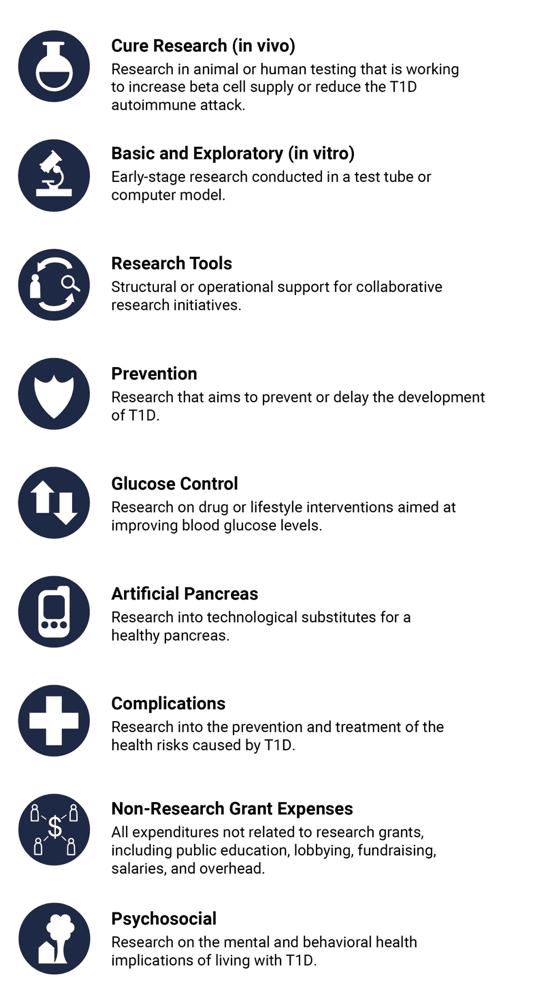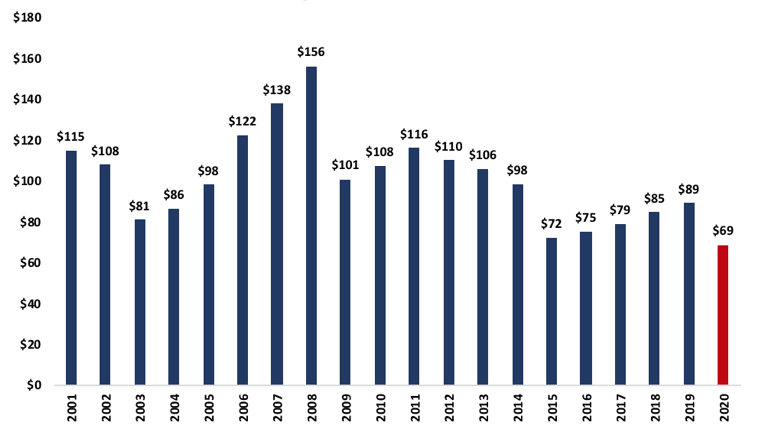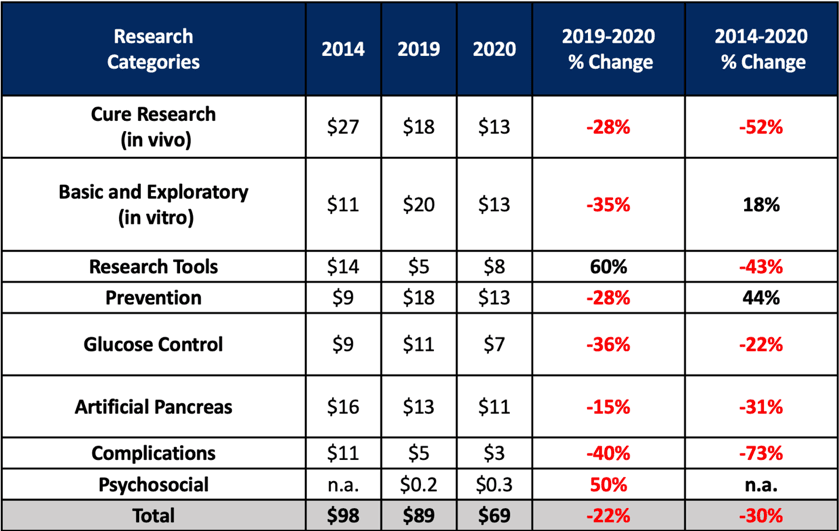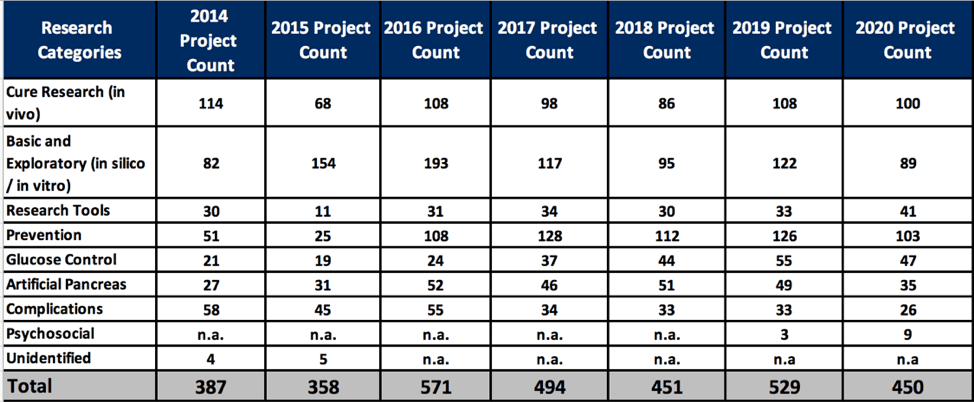This report analyzes the research grants that JDRF funded in Fiscal Year (FY) 2020. JDRF is a powerhouse in the T1D research funding landscape, raising hundreds of millions of dollars a year from individual donors. Outside of governments and for-profit companies, it is the largest single funder of T1D research in the world. In our view, no organization is in a better position to bring about a T1D cure breakthrough.
During FY 2020, JDRF spent $69 million of its $210 million revenue (33%) on research grants. See opening chart. This represents a 20-year low in both absolute dollars and as a percentage of total revenue.
This drop in research grant spending led to declines in funding across most areas of research. Cure research in human and/or animal testing (known as “in vivo” research) was cut by -28% between FY 2019 and FY 2020 and -52% between FY 2014 and FY 2020. Even though JDRF’s donors prioritize cure research over other spending categories, no research area has declined as much in absolute dollars over the past 5 years.
Note: To conduct this report, the JDCA utilized the publicly available JDRF Grant Center, which provides funding and timeline information for every grant JDRF has ever distributed. Using the data provided, the JDCA isolated all grants active in FY 2020, estimated the funding received within that time frame, and individually categorized each of the grants based on the definitions outlined in Appendix A.
Key Points:
- 33% ($69 million) of JDRF's FY 2020 income ($210 million) was used to fund research grants, down -22% from $89 million in FY 2019. See Appendix B.
- The amount of money JDRF allocated to in vivo cure research has been cut in half over the past 5 years, from $27 million in FY 2014 to $13 million in FY 2020.
- Prevention is the only category that has shown significant growth in the past 5 years, increasing 44% from $9 million to $13 million.
- In FY 2020, all major research grant spending categories decreased -- with the exception of Research Tools, which nearly doubled. See Appendix C.
- The spending increase in Research Tools was driven by grants providing operational support for two large T1D research centers: J
- DRF Coordinating Center at Jaeb Center ($1.2 million): Provides general operational support for human-stage research at JDRF’s artificial pancreas coordinating center in collaboration with Jaeb Center for Health Research in Tampa, FL.
- Northern California JDRF Center of Excellence ($1.1 million): Provides structural support to facilitate collaboration between Stanford University and the University of California, San Francisco with the aim of accelerating stem-cell based cures for T1D.
- JDRF spread $69 million over 450 grants in FY 2020 compared to $98 million over 387 grants in FY 2014, resulting in a -40% drop in average funding per grant ($253K in FY 2014 vs. $153K in FY 2020). See Appendix D.
- JDRF grants funded human trials of two potential Practical Cure Projects:
- ViaCyte ($900K): A human trial testing the safety and efficacy of implanting stem cell-derived beta cells within an immunoprotective encapsulation device into patients with T1D.
- Benaroya ($200K): Two human trials that try to “wake” up dysfunctional beta cells in people with longstanding T1D who are not making any insulin but still have beta cells present.
Appendix A: Research Category Definitions

Appendix B: JDRF Research Grant Spending, 2001-2020 (Millions)

Appendix C: Research Grant Spending Trend by Category (Millions)

Appendix D: Number of Grants per Category, 2014-2020

